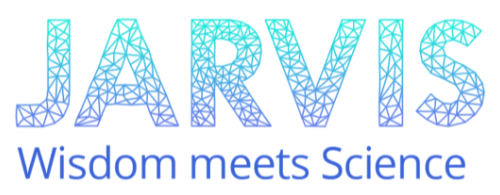1. Doji
A Doji is a candlestick pattern showing minimal price change, where the opening and closing prices are almost identical. This signals market indecision, suggesting a potential reversal. The candlestick resembles a cross or plus sign, indicating that buyers and sellers are in equilibrium.
Traders often see Doji patterns as a sign to be cautious, as they can precede changes in market direction.
However, it's essential to consider other factors and use Doji patterns in conjunction with additional analysis for more accurate decision-making.
2. Hammer
A Hammer is a candlestick pattern indicating a potential trend reversal. It forms when an asset's price opens, experiences a significant drop, but then recovers to close near its opening level.
Visually resembling a hammer, this pattern suggests that despite initial selling pressure, buyers regained control, possibly signaling the end of a downtrend and the beginning of a bullish reversal.
Traders often use the Hammer pattern as a bullish indicator for potential buying opportunities.
3. Shooting Star
The shooting star is a bearish candlestick pattern. It forms when the price opens higher, rallies during the trading session, but closes near its opening level.
The candle has a small body and a long upper shadow, resembling an inverted "T". This pattern signals potential weakness in an uptrend, suggesting that buyers may be losing control, and a bearish reversal could be on the horizon.
It serves as a cautionary signal for traders to be wary of a potential shift in market sentiment towards the downside.
4. Engulfing Patterns
Engulfing patterns are two-candle setups in technical analysis: Bullish Engulfing, and Bearish Engulfing.
● Bullish Engulfing: A two-candle pattern where the second candle completely engulfs the previous one, signaling a potential bullish reversal.
● Bearish Engulfing: Similar to the bullish engulfing but indicates a potential bearish reversal.
These patterns suggest shifts in market sentiment, making them valuable for traders to anticipate potential reversals or trend changes.
5. Morning Star
In trading, the Morning Star is a bullish reversal pattern. It consists of three candles: a large downward candle, followed by a smaller candle with a gap (up or down), and finally a large upward candle.
This pattern indicates a potential shift from a bearish to a bullish trend, as the initial selling pressure weakens, followed by indecision and then a strong buying momentum.
Traders often view the Morning Star as a signal to consider entering long positions.
6. Evening Star
The Evening Star is a bearish candlestick pattern signaling a potential reversal in an uptrend. It consists of three candles: a large bullish candle, followed by a small bullish or bearish candle, and finally, a large bearish candle.
The first two candles indicate the weakening of bullish momentum, and the third candle confirms a potential trend reversal, making it a useful indicator for you to consider when making selling decisions in the financial markets.
7. Dark Cloud Cover
After an uptrend, a bearish reversal pattern forms with two candles. The first is bullish, and the second opens above the first's close but closes below its midpoint, creating a dark cloud effect.
This signals potential downside as it reflects a shift from bullish sentiment to bearish, highlighting the possibility of a reversal in the upward trend.
Traders often consider this pattern when making decisions about selling or adjusting positions.
8. Hanging Man
The Hanging Man candlestick pattern signals a potential trend reversal after an uptrend. It looks like a candle with a small body and a long lower shadow, resembling a hanging man.
This formation suggests that despite an initial push higher, sellers managed to bring the price down significantly by the end of the session, indicating a possible shift towards a bearish sentiment.
Traders often use it as a cautious signal to monitor for potential changes in market direction.
9. Inverted Hammer
The Inverted Hammer is a candlestick pattern signaling potential market reversal. After a downtrend, it forms with a small body and a long upper shadow, indicating buyer pressure. Traders interpret it as a possible shift from bearish to bullish sentiment.
Confirmation from subsequent price action and indicators is crucial for making informed decisions based on this pattern.
10. Three Inside Up/Down
The Three Inside Up is a bullish reversal pattern. First, a small positive candle is followed by a larger negative candle (inside the previous one). Finally, a third positive candle closes above the first candle's high, signaling potential upward momentum.
This sequence suggests a shift from a downtrend to a potential uptrend, making it a pattern traders may consider when analyzing market trends.
11. Harami
The term "Harami," Japanese for "pregnant," describes a pattern that looks like a pregnant woman's body with a smaller candlestick inside. Odd name, right? Anyway, this pattern forms with two candles. The first one is big with a small shadow, and the second is small, entirely within the first's body.
During an uptrend, the first candle is green, and the second is red, suggesting a potential trend shift. Conversely, in a downtrend, the first candle is red, and the second is green, hinting at a good time to consider buying.
So, despite the peculiar name, Harami patterns can provide useful signals for traders.
12. Three Black Crows
The Three Black Crows is a bearish candlestick pattern that indicates a potential trend reversal. It consists of three consecutive long bearish candles, each opening higher than the previous day's close.
This pattern suggests a strong shift in market sentiment towards selling, as each candle extends the downtrend.
Traders often interpret the Three Black Crows as a warning of sustained bearish pressure, prompting caution and consideration of potential selling opportunities or adjustments to existing positions.















